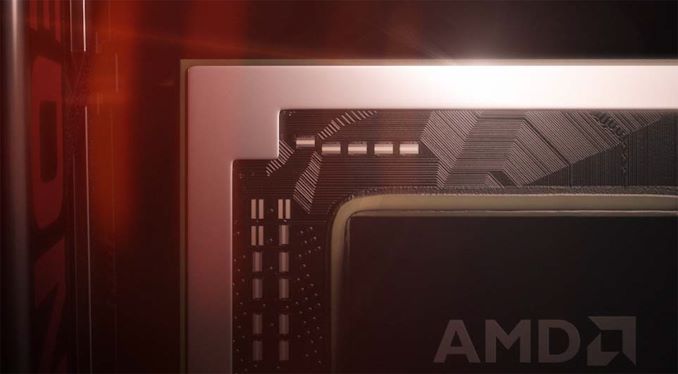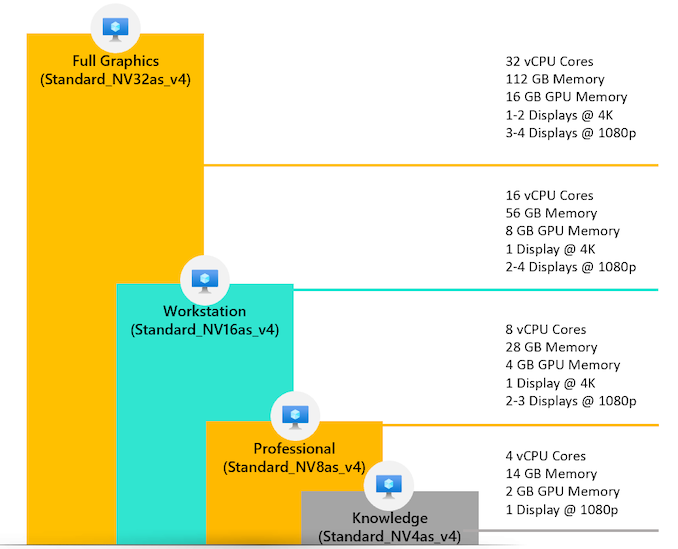Microsoft Now Offers Azure NVv4 Virtual Machines with AMD EPYC & Radeon Instinct
by Anton Shilov on March 18, 2020 2:15 PM EST
AMD’s 2nd Generation EPYC processors have gained a strong recognition among cloud computing companies, and today numerous instances are powered by AMD’s latest server CPUs. By contrast, however, the company has not been particularly successful with its datacenter GPUs, so instances powered by EPYC CPUs and Radeon Instinct accelerators are rare. Things are getting better for AMD, though, and this week Microsoft Azure began to offer virtual machines that offer both AMD’s CPUs and GPUs.
An all-AMD affair, Microsoft's new Azure NVv4 Virtual Machines offer 32 cores from AMD 2nd gen EPYC processors paired with AMD's Radeon Instinct MI25 GPU. EPYC at this point is a known quantity as the latest and greatest CPU architecture from AMD, living up to the expectations that come from it. Pairing it with the Radeon Instinct MI25, however, is an unusual choice. The MI25 is from AMD's first generation of Instinct accelerators, and uses the company's 14nm Vega 10 GPU. This is in contrast to the newer MI50/MI60 accelerators, which are based on the newer 7nm Vega GPU, and incorporate some new server-specific features. So the NVv4 instance's GPU offering is admittedly less than AMD's best showing from a performance and power efficiency standpoint.
The virtual machines are meant to run virtual desktops and to be used for a variety of desktop and workstation workloads that take advantage of multi-core CPUs as well as high-performance GPUs. Depending on requirements, the systems offer four resource-balanced configurations, from 1/8th GPU and four CPU cores, to a full GPU with 32 CPU cores. Microsoft notes that for security reasons one VM can only access the GPU resources assigned to them and the secure hardware partitioning blocks unapproved access by other VMs.
These new instances will be available in South Central US, East US, and West Europe regions starting April 1. Microsoft intends to offer more AMD-powered NVv4 VMs in other regions on the coming months.
In addition to the NVv4 VMs, Microsoft Azure offers Dav4, Eav4, HBv2, and Lsv2 instances based on AMD’s EPYC processors.
Related Reading:
- Amazon AWS Offers Another AMD EPYC-Powered Instance: T3a
- Amazon Offers More EPYC: M5ad & R5ad Instances
- Updated AMD Ryzen and EPYC CPU Roadmaps March 2020: Milan, Genoa, and Vermeer
- AMD Expands EPYC Lineup with 64-Core EPYC 7662 & Large Cache EPYC 7532 CPUs
Sources: AMD, Microsoft Azure











18 Comments
View All Comments
jeremyshaw - Wednesday, March 18, 2020 - link
Further cementing the eventual downfall of Nvidia. No CPU = no new contracts.azfacea - Wednesday, March 18, 2020 - link
and there is their criminal behavior with Linux drivers. so much joy in watching them go into the toilet.The_Assimilator - Wednesday, March 18, 2020 - link
LMAO, you guys are so funny.Deicidium369 - Tuesday, May 5, 2020 - link
IKR - whenever I need a good laugh i look for one of his posts... never fails to amuse.olafgarten - Wednesday, March 18, 2020 - link
Nvidia will be fine until CUDA dies. As it is used for almost all deep learning right now, and AMD compatible implementations are nowhere near mature, I think they will be alright for a while.yannigr2 - Wednesday, March 18, 2020 - link
Both AMD and Intel will be in a position to offer in the near future CPUs and GPUs as a package. No reason for most companies to mess with another company, if that company doesn't offer clearly better performance, or at least much better value. When speaking about Nvidia, the second is not a possibility, so you have an Nvidia that will have to constantly offer something that would need to be way faster than the competition. For now they are fine, but in the future they will have huge problems. I still don't understand why they don't heavily invest in ARM SOCs. It's their only hope. ARM server CPUs and high performance ARM CPUs for desktops.Atari2600 - Wednesday, March 18, 2020 - link
NVidia could get on board with an ARM based solution.Given what Amazon have put out right now, in a few years time, ARM will be more than viable as a competitor.
PeachNCream - Thursday, March 19, 2020 - link
They could also just buy AMD and be done with it.Deicidium369 - Tuesday, May 5, 2020 - link
Intel will - AMD not so much. The paradigm is shifting - CXL and GenZ - will allow pooling of various resources .Intel Xe HP and Xe HPC and OneAPI will have the presence in the datacenter and the marketing muscle and $$$ to dislodge Nvidia from the Top of the Heap. AMD will be in 3rd place.
ARM for desktop is a dead end for PC buyers - why move to something that has to emulate the world's largest software base in existence?
Xajel - Thursday, March 19, 2020 - link
Well, NV has spent billions building an ecosystem, and a lot now depends on it. It will take a while, but the ecosystem is compatible with x86, ARM & POWERPC. And it offers a lot of advantages compared to the market, that's why it staying.Yes, AMD is building a competition, and they're coming stronger and stronger, Intel is also coming in a big way though they will need more time than AMD. This will force NV to lower prices and work harder on features and performance.
There are other alternatives to PCIe, while not as tempting as how IF and NV works. But these works across platforms, It could not only makes NV work on Intel or AMD CPU's, they will allow AMD GPU's to work on Intel's CPUs and vise versa.. and I don't mean PCIe, but better with cache coherence, low latency, bla bla bla technologies..